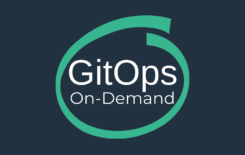Software development has become highly sophisticated in recent years. Unlike the yesteryears, agility is the key to dealing with increasing competition and market demands. Most organizations today are simply doing away with traditional hardware setups and embracing cloud-based technologies.
Application release automation (ARA), which allows devs to collaborate with stakeholders in the organization using version control utilities, has already gained significant traction. But organizations are now in the process of taking it one step forward and migrating all development activity to the cloud.
Cloud Release Automation is shaping up to be the next big thing.
Related: Automated DevOps: The Key to Business Continuity
Out-of-the-Box Results
More and more organizations are reaching the conclusion that DevOps works best on the Cloud. In a nutshell, this is because DevOps and cloud-based delivery models offer speed and agility to businesses. The main reason for the emergence of this methodology is its ability to combat traditional challenges.
Business Agility – Better Scalability
Businesses have to perform application or network configurations and scale up the existing systems to the changing landscape. Your business infrastructure will scale up with time and that too dynamically. Cloud Release Automation smoothly facilitates the growth of your IT infrastructure with minimal errors.
Cost Efficiency – Better ROI
On-premise infrastructure comes at a cost. Besides the hardware purchase and maintenance expenditures, organizations spent a lot of time and resources training and onboarding their IT teams. Moving to the cloud essentially eliminates most of the aforementioned factors and issues.
Centralized Infrastructure – Better Quality
The centralized nature of cloud computing provides DevOps automation with a dynamic out-of-the-box platform for testing, deployment, and production procedures. This basically solves the distributed complexity challenge, a problem on-premise ecosystems have always failed to address.
In a nutshell, Cloud Release Automation allows you to deploy your software to testing and production environments with the push of a button. This allows you to get fast feedback on the quality of your software by allowing comprehensive testing as soon as possible after changes are made to your database.
Read More: DevOps in the Cloud: The Next Best Thing
Top 5 Advantages of Cloud Release Automation
There are a wide range of advantages that come with Automating your Cloud Releases and development pipeline in general. The Top 5 are as follows.
1 – Smooth(er) Automation
The Cloud Release Automation process includes infrastructure provisioning, making builds, running test cases, and generating reports with mailing alerts and so on. Automating processes by leveraging the cloud helps to enhance the pace of automation, makes the process error free, robust and efficient.
2 – Improved Monitoring
Cloud providers typically provide all the tools in a centralized place for faster access and ease-of-use. Cloud monitoring is generally limited to email alerts, but DevOps can trigger custom alarms and various monitoring alerts enabling you to utilize resources more effectively and optimize your pipeline.
3 – Faster Deployment
DevOps focuses on solving infrastructural problems by building custom logic and writing capabilities. DevOps helps automate the whole process by using single click build tools that interact with the cloud services and get the tasks done smoothly. This is why Cloud and Automation are such a potent combo.
For example, with Continuous Integration (CI) tools (i.e – Jenkins), you can trigger the build once the new code is pushed to the version control system, pull the latest code from the version control system, run automation test cases for code sanity and build deployable artifacts if the test cases are passed.
This is followed by triggering deployment in the staging environment and automation testing execution on the staging environment. Doing so promotes well-tested code to the production environment, something that ensures optimal code integrity and enhanced quality for best business results.
4 – Cloud Server Replication
Every cloud provider has some kind of backup mechanism, which you don’t have to maintain or take care of. You will also not need to launch the servers manually and restore backups on a different environment. This entire process can be automated by implementing DevOps in the cloud.
5 – Orchestration
Orchestration provides complete coordination and control in automation covering the entire hierarchy in the infrastructure. Orchestration tools are independent of any of the cloud providers and have their own defined standards, but could be easily integrated with all the leading cloud providers.
Related: Top 7 Cloud Databases for 2020
Summing Up
Cloud Release Automation makes it easier for all stakeholders in the organization to cooperate in real-time with each other as they have a higher availability of tools, test suites, and reports. This effectively automates the delivery pipeline which results in improved efficiency and high reusability.
The bottom line is that releasing apps to the cloud is a smooth process, since Infrastructure-as-a-Service (IaaS) providers offer the compute environment. Also, organizations can now also use a standalone SaaS release management service or those embedded in Platform-as-a-Service (PaaS) solutions.
However, you must keep in mind that this is a double-edged sword since releasing apps to the public cloud potentially multiplies the damage done by software flaws. But assuming you have taken care of testing and monitoring mechanisms, Cloud Release Automation is a big step for DevOps.





